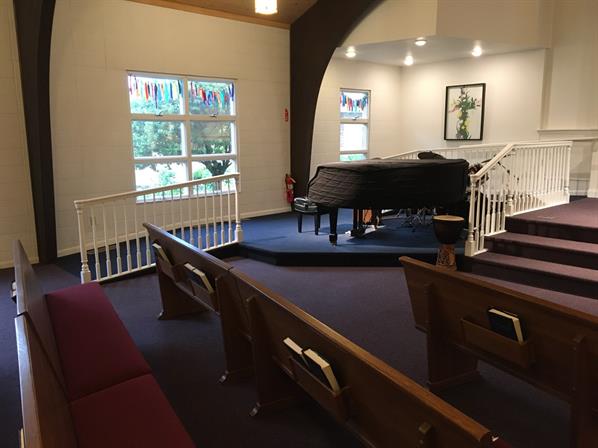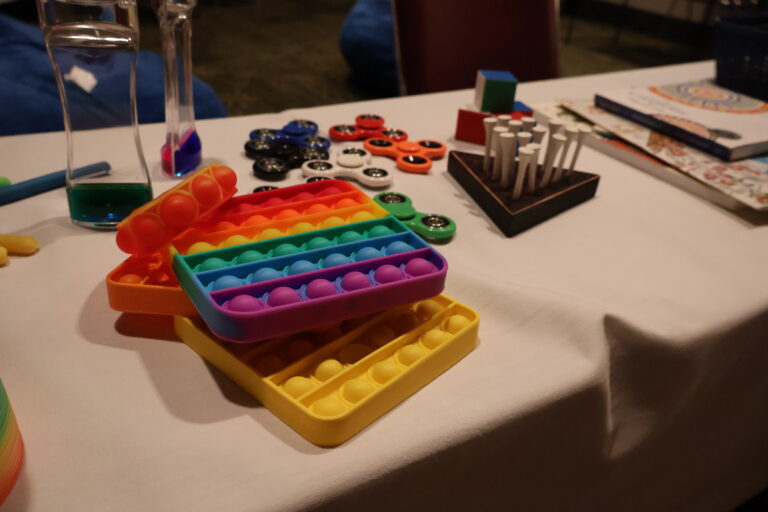Three Barriers to Spiritual Formation
By Denise Reesor
Based on a workshop presented by ADN at Church of the Brethren Annual Conference 2017 in Grand Rapids, Michigan
As mere humans, we are not the “givers” of God’s salvation, hope, or love. That’s God’s work and God’s gift. We are, however, called to provide the invitation and the environment in which all people can connect with the gospel message and grow in relationship with Jesus.
For people with disabilities, the invitation to engage and enter into conversation with God often requires attention, sensitivity, curiosity, compassion, creativity and ACTION beyond opening the church doors on Sunday morning and leaving an open seat in the sanctuary.
It can be intimidating to figure out how to present the Gospel to someone with an intellectual disability, with Autism Spectrum Disorder, a debilitating mental illness, or other disability. Fortunately, God does not expect us to have every answer! When we break down barriers in our churches that prevent participation, people are freed to connect to God in new ways.
Let’s make sure we’re doing our part to make the gospel and God’s goodness accessible to all by focusing our efforts on breaking down these three types of barriers….
Attitude Barriers
- How do we view people with disabilities? As objects of pity? Sick? Potentially dangerous? “Holy Innocents?” Each of these attitudes is dehumanizing to a person with a disability. Stigmas toward disabilities can change by having honest conversations, exposure experiences, training, and listening to the stories of families and individuals with disabilities. (Contact ADN for more ideas and resources)
- Have we asked people with disabilities and their caregivers if they feel welcome in worship, by leadership, in Sunday school and church fellowship programs? What would feel more welcoming?
- Do people with disabilities serve on church committees or in other leadership roles? Why or why not?
- Does our church have an accessibility advocate and/or committee?
- Have ushers, teachers, and youth leaders/mentors have been instructed regarding appropriate ways to greet and respond to the needs of people with disabilities?
- Do we provide pastoral care for individuals with disabilities and caregivers so that their needs are addressed, including physical, emotional and spiritual needs?
Communication Barriers
- Do we have assistive listening devices available for people with hearing loss?
- Do we, or can we, provide sign-language interpretation when requested?
- Is the overall lighting adequate for signing and speech reading, or for persons with low vision?
- Are songbooks, Bibles, bulletins, newsletters, and handouts available in alternative formats such as large print, audio, and digital (or Braille, when requested in advance)? Is information about these readily accessible?
- Are printed copies of the sermon and spoken elements of the worship service available for people with hearing loss? Is Captioning used with visual projection?
Physical Barriers
- Is there adequate accessible parking? Is there transportation provided for those unable to drive?
- Are entrances and hallways free from barriers that can impede a wheelchair? (door bases, grates, thick floor mats)
- Are door handles on inside doors all lever style?
- Is a ramp (with a slope of no greater than a 1:12 rise) available for access into the building?
- Are doors to rooms, especially restrooms, at least 36 inches in width?
- Are proper handrails installed in all toilet areas for assisting in transfer and standing? Are all rails at hospital fixture height? Do all sink fixtures allow for knee access and have insulated pipes and lever-style handles?
- Does at least one toilet stall have a raised seat and space next to the toilet for side transfer? Is there room enough to turn around a large, power wheelchair? Even better, is there an accessible unisex bathroom?
- Can coat racks be accessed by all people?
- Are all levels of the building accessible from the inside?
- Do people who use wheelchairs have choices in where to sit in the sanctuary (besides the front and back rows)?
- Is the pulpit area accessible to people with mobility issues?






